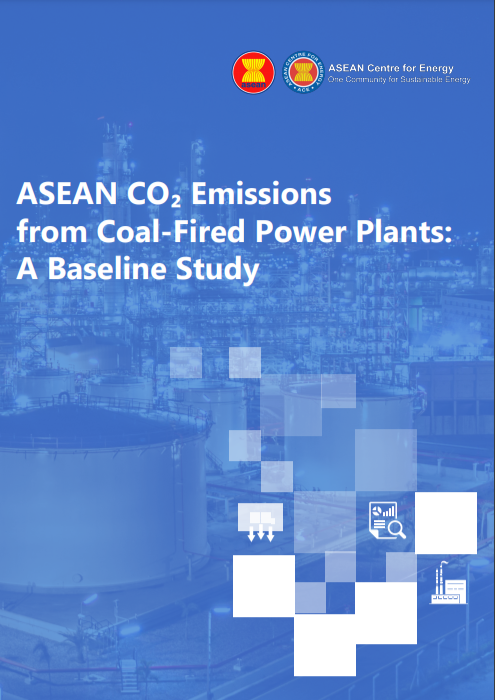
Category
Tag
Author
ASEAN Centre for Energy (ACE) and ASEAN Forum on Coal (AFOC)
Fossil energy is the principal source of the current and future energy supply for the Association of Southeast Asian Nations (ASEAN). More than three quarters of ASEAN’s total energy consumption is expected to be met by fossil fuels till 2040.
The ASEAN region is rich in coal resources and according to the Baseline Scenario profiled in the 6th ASEAN Energy Outlook, coal fired power plants(CFPPs) are expected to generate 3,123 terra-watt hours of electricity, accounting for 25.7% of total electricity production in 2040.
In recognition of the need to reduce the environmental impacts of the CFPPs, the ASEAN Member States (AMS) are making efforts to move towards more efficient CFPP technologies through the Clean Coal Technology (CCT) Programme Area under the ASEAN Plan of Action for Energy Cooperation (APAEC). Given the necessity to find ways to reduce the carbon footprint of the CFPPs in ASEAN, this study was carried out by the ASEAN Centre for Energy (ACE) with support from the ASEAN Climate Change and Energy Project (ACCEPT) with the goal to evaluate the opportunities and challenges in setting baseline emission standards for the CFPPs in the ASEAN region.
The results of the study indicate that more efficient CFPP technologies, such as supercritical and ultra-supercritical, are already in operation with projections for increased capacity deployment in ASEAN. A variety of different coal types or ranks, including anthracite, bituminous, sub-bituminous and lignite are used in ASEAN today. Given the vibrant ASEAN regional coal market, it is possible for the AMS to access higher ranks of coal. Moreover, the CFPP technologies in use today are all at maturity and are ready for commercial deployment at reasonable cost. Therefore, based on the currently available CFPP technologies and coal ranks in ASEAN, it is evident that the region is in a position to establish reference emission standards for CFPPs.
Through an analysis of the emission factors of all the reported CFPPs in the ASEAN region, we propose two reference emission standards for CFPPs. The best-available-technology (BAT) represents the best attainable emissions factor among all the operating CFPPs in ASEAN at 726.19 g-CO2/kWh. APS+, at 854.40 g-CO2/kWh, represents a less ambitious emissions factor which is in between the BAT and the overall emissions factor under the APAEC Targets Scenario (APS) at 982.60 g-CO2/kWh. Assuming these emission standards can be achieved by 2040, the CFPPs could contribute 16.56% and 31.98% of the overall decarbonisation targets set for the AMS Targets Scenario (ATS) and 10.15% and 19.60% of the overall decarbonisation targets set for the APS with the APS+ and BAT emission standards, respectively.